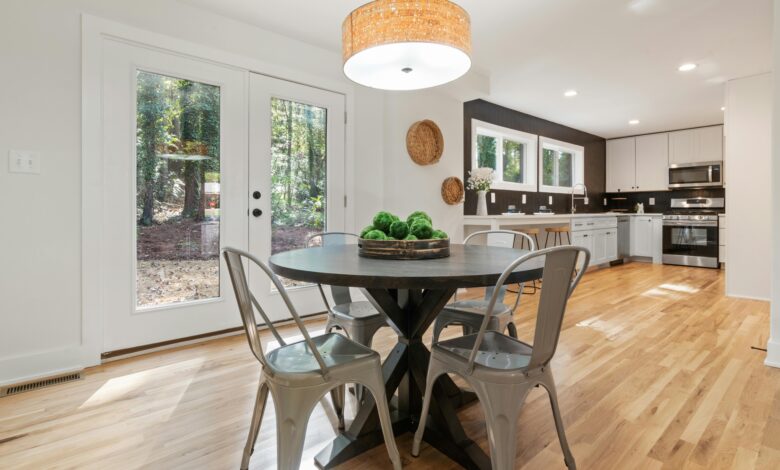The Best Tips for Basement Renovations: Transforming Your Space into a Functional and Stylish Area

Basement renovations can be one of the most rewarding home improvement projects, offering the opportunity to create additional living space, increase property value, and enhance your home’s functionality. However, basements present unique challenges due to their below-ground location, moisture issues, and limited natural light. In this article, we’ll explore the best tips for basement renovations, ensuring your project is both practical and aesthetically pleasing.
1. Plan with Purpose
Before diving into renovations, determine how you want to use the space. Popular basement uses include:
- Home Theater or Entertainment Room : Perfect for movie nights and gaming.
- Guest Suite : Add a bedroom and bathroom for visitors.
- Home Office or Study : Create a quiet workspace.
- Gym or Playroom : Ideal for fitness enthusiasts or families with kids.
- Rental Unit : Increase income potential by adding a separate apartment.
Tip : Tailor your design to your lifestyle and needs. A well-thought-out plan ensures efficient use of space and avoids costly changes later.
2. Address Moisture and Waterproofing
Basements are prone to moisture problems, which can lead to mold, mildew, and structural damage. Address these issues before starting any renovation work:
- Inspect for Leaks : Check walls, floors, and ceilings for signs of water damage.
- Install a Sump Pump : Prevent flooding by installing a sump pump system.
- Apply Waterproof Coatings : Use sealants on walls and floors to block moisture.
- Improve Drainage : Ensure proper grading around your home to direct water away from the foundation.
Tip : Consult a professional if you suspect significant water issues. Fixing these problems upfront saves time and money in the long run.
3. Maximize Natural Light
Basements often lack natural light, but there are ways to brighten the space:
- Egress Windows : Install larger windows that meet safety codes and allow more light.
- Light Wells : Create sunken areas outside the windows to bring in additional light.
- Mirrors : Strategically place mirrors to reflect light and make the space feel larger.
- Light Colors : Use white or neutral tones for walls, ceilings, and furniture to enhance brightness.
Tip : If adding windows isn’t feasible, invest in high-quality artificial lighting (e.g., recessed lights, LED strips) to mimic natural light.
4. Choose Durable Flooring
Basement floors require materials that can withstand moisture and wear. Consider these options:
- Luxury Vinyl Plank (LVP) : Water-resistant, durable, and available in various styles.
- Tile : Ceramic or porcelain tiles are moisture-proof and easy to clean.
- Concrete : Polished concrete offers an industrial look and is highly durable.
- Carpet Tiles : Removable and moisture-resistant, ideal for playrooms or gyms.
Tip : Avoid traditional hardwood flooring, as it can warp or buckle due to humidity.
5. Optimize Ceiling Height
Low ceilings are a common challenge in basements. To make the space feel more open:
- Exposed Ceilings : Leave ductwork and pipes exposed for an industrial aesthetic.
- Drop Ceilings : Use removable tiles to access plumbing and electrical systems easily.
- Raised Floors : Elevate the floor slightly to gain extra headroom (if structural changes are allowed).
Tip : Avoid cluttering the ceiling with bulky fixtures; opt for sleek, recessed lighting instead.
6. Focus on Insulation and Climate Control
Proper insulation and temperature regulation are essential for comfort:
- Insulate Walls and Ceilings : Use moisture-resistant insulation like spray foam or rigid foam boards.
- Install a Dehumidifier : Maintain optimal humidity levels to prevent mold growth.
- Add HVAC Vents : Ensure the basement has adequate heating and cooling.
- Consider Radiant Floor Heating : Provides consistent warmth without taking up wall space.
Tip : Proper climate control makes the basement usable year-round, regardless of external weather conditions.
7. Design for Multi-Functionality
Make the most of your basement by designing flexible spaces:
- Zoning : Divide the area into distinct zones (e.g., entertainment, storage, workspace).
- Furniture with Storage : Use ottomans, benches, and shelving units to maximize space.
- Murphy Beds : Convert a guest room into a multipurpose area when not in use.
- Sliding Doors or Partitions : Create privacy without sacrificing openness.
Tip : Think about how each section of the basement can serve multiple purposes to maximize utility.
8. Enhance Acoustics
Basements can amplify noise due to hard surfaces and low ceilings. Improve acoustics with:
- Soundproofing Panels : Install acoustic panels on walls or ceilings.
- Carpets and Rugs : Absorb sound and reduce echo.
- Insulated Drywall : Blocks noise transmission between floors.
- Sealed Doors : Use solid-core doors to minimize sound leakage.
Tip : For home theaters or music rooms, invest in professional-grade soundproofing solutions.
9. Incorporate Smart Storage Solutions
Basements are often used for storage, so organization is key:
- Built-In Shelving : Utilize vertical space with custom shelves or cabinets.
- Under-Stair Storage : Maximize unused areas beneath staircases.
- Hidden Compartments : Integrate storage into seating or decorative elements.
- Label Everything : Keep items organized and easily accessible.
Tip : Prioritize decluttering before renovating to ensure only essential items remain.
10. Add Finishing Touches
The final details can elevate your basement from functional to fabulous:
- Accent Walls : Use bold colors or textured materials for visual interest.
- Artwork and Decor : Personalize the space with paintings, photographs, or sculptures.
- Plants : Incorporate low-maintenance indoor plants to add life and freshness.
- Statement Lighting : Choose unique fixtures to anchor the design.
Tip : Balance aesthetics with practicality—choose decor that complements the room’s purpose.
Common Mistakes to Avoid
- Ignoring Permits : Always check local building codes and obtain necessary permits.
- Overlooking Ventilation : Poor airflow can lead to stale air and moisture buildup.
- Skipping Professional Help : While DIY projects save money, complex tasks like plumbing and electrical work require expertise.
- Underestimating Costs : Factor in unexpected expenses, such as repairs or material upgrades.
- Neglecting Safety Features : Include smoke detectors, carbon monoxide alarms, and egress routes for emergencies.




